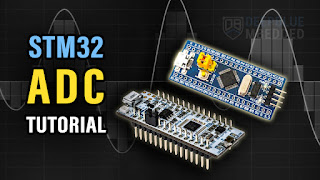How to practice with FPGA without a physical board?
You can get really good with FPGAs without ever touching a dev board, as long as you treat it like “real” hardware design and not just theory. Here’s a practical roadmap.
1. Learn HDL by Writing & Simulating Designs
Pick one HDL to start:
-
Verilog / SystemVerilog – very common in industry.
-
VHDL – common in Europe & aerospace.
-
(Later you can learn both; don’t juggle two at once.)
Then use a simulator:
-
Vendor tools (free editions):
-
Xilinx Vivado’s built-in simulator (for Verilog/VHDL).
-
Intel Quartus with ModelSim/Questa Starter.
-
-
Open-source:
-
GHDL (VHDL).
-
Verilator (Verilog/SystemVerilog, very fast, good for bigger projects).
-
Online playgrounds like EDA Playground (no install, great for quick experiments).
-
Practice flow:
-
Write a tiny module (e.g., 4-bit adder, counter, FSM).
-
Write a testbench that:
-
Drives inputs (clk, reset, data).
-
Checks outputs with
$display, assertions, or waveforms.
-
-
Run simulation and inspect waveforms (VCD files in GTKWave, or the sim’s own viewer).
-
Fix logic, rerun, repeat.
Do this for:
-
Counters, timers, pulse generators.
-
Finite State Machines (traffic light controller, UART RX/TX).
-
Simple ALU, shift registers, FIFOs.
You’re training core FPGA skills: synchronous design, resets, timing, clean coding style.
2. Use Vendor Tools as If You Had a Board
Even without hardware, install one full toolchain and practice:
-
Create a project (e.g., “blinky”, UART, simple CPU).
-
Add your RTL files.
-
Define a top module with ports (
clk,reset,io). -
Run:
-
Synthesis
-
Implementation / Place & Route
-
Timing analysis
-
You’ll learn:
-
How constraints work (
.xdc,.sdc): clocks, I/O standards, pin planning. -
How timing reports look: setup/hold, slack, critical path.
-
How resource usage reports look (LUTs, FFs, BRAM, DSP).
Even though pins aren’t connected to a real board, you’re learning exactly what you’ll do later.
3. Do “Virtual Labs” & Online Courses
Many FPGA/HDL courses and universities use sim-only labs:
-
Labs where you:
-
Design an SPI controller and verify with a testbench.
-
Implement a UART and write a “loopback” test.
-
Build a tiny soft CPU and simulate it executing an instruction stream.
-
-
You can follow those same exercises using your own simulator.
Search for:
-
“FPGA lab HDL simulation only”
-
“Verilog UART testbench example”
-
“VHDL finite state machine tutorial”
Then don’t copy–paste; retype & understand. Modify something (change baud rate, add parity, etc.) and re-verify.
4. Co-Simulate With Software (Nice Level-Up)
If you use Verilator + C/C++ or cocotb (Python), you can:
-
Treat your FPGA design as a “hardware library”
-
Drive it from a program like you would from firmware.
Example ideas:
-
Simulate a custom peripheral + “fake firmware” that writes registers.
-
Feed input data from a file (e.g., audio samples) through your FPGA filter.
-
Check that the output matches a Python reference model (NumPy, etc.).
This builds intuition for FPGA + MCU/CPU interaction, which is how many real systems work.
5. Practice Good Design Habits (Even Without Hardware)
You can still enforce “real-world” rules:
-
Synchronous design only:
-
One main
clk, use synchronous resets. -
Avoid combinational feedback, latches, gated clocks.
-
-
Write testbenches for everything, not just top-level.
-
Code review yourself:
-
Check for inferred latches.
-
Check that all
casebranches are covered. -
Use parameters/generics instead of magic numbers.
-
If you design like this, going to a real FPGA later is just plugging in the board and fixing pin constraints.
6. What You Can’t Fully Learn Without a Board
Worth being honest:
-
Real-world signal integrity: ringing, noise, ground bounce.
-
Clocking issues: jitter, poor constraints, bad clock domain crossings that only show up in hardware.
-
Timing closure under stress: your sim passes, but the real device fails due to mis-constraints.
-
Tool quirks: sometimes synthesis “optimizes” in surprising ways that only hardware + logic analyzer reveals.
But if you practice good simulation and constraints discipline now, the gap will be much smaller when you finally get a board.
7. Simple Practice Plan (No Board Needed)
If you want a concrete “curriculum”:
-
Week 1–2
-
Learn HDL syntax (Verilog or VHDL).
-
Implement: adder, counter, synchronizer, simple FSM.
-
Simulate everything.
-
-
Week 3–4
-
Build UART TX + RX in HDL.
-
Write testbench that sends a byte stream, checks received data.
-
Synthesize in Vivado/Quartus; read timing/resource reports.
-
-
Week 5–6
-
Implement FIR filter or PWM generator.
-
Feed in sample data (from file) in sim; verify output against a Python/C reference.
-
-
Week 7+
-
Design a small soft CPU or a custom accelerator ALU.
-
Run assembled/instruction sequences in sim.
-
Do all that and when you finally buy a dev board, you’ll mostly be fighting with USB drivers and pinouts—not with HDL or FPGA concepts.




评论
发表评论